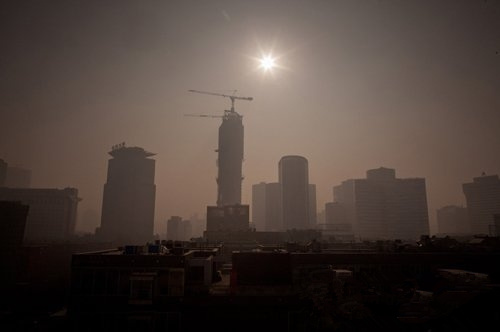Ozone main air pollutant in China
Xinhua, September 1, 2015 Adjust font size:
 |
|
Ozone overtook PM2.5 to become the main air pollutant in China in July. [File photo] |
Ozone overtook PM2.5 to become the main air pollutant in China in July, and may remain so until the end of October, according to a report released Monday.
China sees a regular pattern in terms of the regional and seasonal distribution of ozone -- the density is higher in southern cities, while across China ozone levels are higher in summer than winter, according to the report in Monday's Economic Information Daily, which cited Meng Xiaoyan, engineer with the China National Environmental Monitoring Center.
As well as being harder to detect than PM2.5, ozone is more harmful, and has been linked to respiratory, eye and immune issues. Moreover, crops can be affected by ozone, too.
According to China Meteorological Administration, man-made ozone pollution comes from volatile organic pollutants and nitrogen oxide.
Despite the dangers, prevention and control efforts face a lot of difficulties in China.
According to Wang Yuesi, an environmental protection expert, detection methods in China are underdeveloped, and supporting measures and standards are lacking. In addition, the combined effects of ozone and PM2.5 have made things even more difficult.
Xiao Yu, a researcher at Chinese Academy of Science, is one of many experts to call for more attention to be paid to the control and prevention of ozone pollution.
It has been suggested that regional prevention and control mechanisms be rolled out in areas where ozone pollution is particularly severe, such as North China, and the Yangtze and Pearl river delta areas.